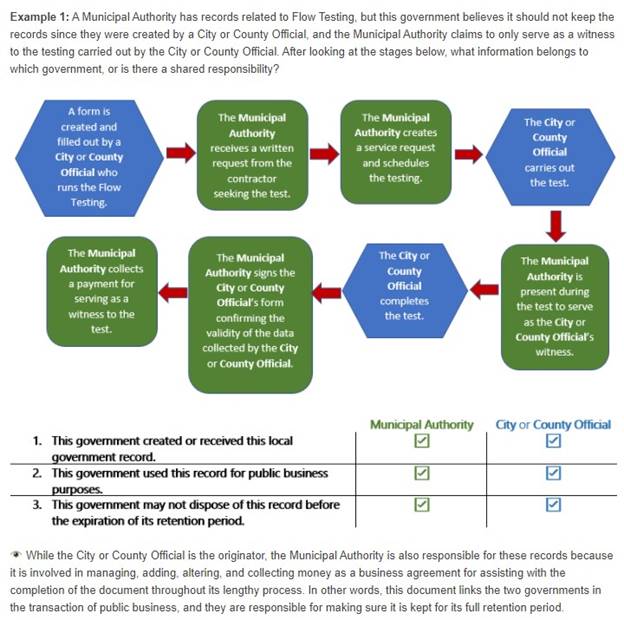Section 2: Office of Primary Responsibility (OPR)
Anchor: #i1008773Office of Primary Responsibility
The Official Record responsibility refers to the maintenance, retention, and destruction of an official record in accordance with the Records Retention Schedule. Specific organizational units within Districts and Divisions typically have responsibility for the creation, maintenance and retention of official records related to their functions.
Anchor: #i1008788Determining the Office of Primary Responsibility for Records
Identifying the Office(s) of Primary Responsibility for specific records helps in reducing redundant record keeping and coordinates the disposition of convenience or informational copies when records are destroyed. It also aids in locating official records or documents subject to legal holds or open records requests.
The Office(s) of Primary of Responsibility is determined by the:
- Anchor: #NYBCPINR
- Office responsible for the creation of the record. Anchor: #YBRJUDCJ
- Primary responsibility for operations related to the record. Anchor: #ALXUMWED
- Performs the decisive action on a form, document or other record keeping requirement.
Specific Districts and Divisions may have the responsibility for the same document within the agency. For example, more than one District or Division may be responsible for the official record if:
- Anchor: #VNGNKVOP
- It serves a different function in more than one District or Division, or Anchor: #ORTNQESH
- The District or Division office has "sign-off" or approval responsibility related to a process, and where another District or Division office is responsible for maintaining the official record.
It is possible that files related to an office's function often contain mixed original official records and convenience copies. Some duplication is inevitable, and it is unnecessary or impractical to micromanage files on a document-by-document basis. When in doubt, the best practice in this circumstance is to treat the file as the official record and manage it accordingly.
Anchor: #i1008851Example of Office of Primary Responsibility
The Office of Primary Responsibility example contains sufficient information from the Records Retention Schedule to identify records management requirements and provides a column identifying the office responsible for the official record.
See table below:
|
Agency Item Number |
Record Series Title |
Retention Period |
Remarks |
Office of Primary Responsibility (OPR) |
|---|---|---|---|---|
|
ACF05 |
Time Sheets: Employee time records and employee time sheets |
FE+47 |
FE=Fiscal Year End.Finance Division office of record for Austin headquarters division and office timesheets. SEE ALSO ACF21 for time sheet support documentation. Time off/Sick leave requests retained by originating offices per Agency Item Number ACF21 in the schedule for common accounting records. |
Finance Division |
|
Block |
Description |
|---|---|
|
Agency Item Number |
The agency item number references the listing of the record series on the current approved TxDOT Records Retention Schedule. |
|
Record Series Description |
A record series is a file or group of files that has a similar function and retention requirement. |
|
Total Retention |
This block indicates the required total minimum length of time to retain the record of the record series. |
|
Remarks |
May contain information such as coding explanations, exact location of records, etc. |
|
Office of Responsibility |
Identifies the office(s) that maintains the official record. There will be instances where all Districts and Divisions have responsibility for certain types of records, such as general correspondence. |
Figure 2-1. TSLAC’s Example of Multiple OPRs for the Same Official Record.
Anchor: #i1009065Coordinating Responsibility
To clarify responsibility for retaining records and to reduce file management overhead in other offices, the Records Administrators and Records Coordinators should collaborate to designate the official record responsibility between department offices.
This is especially important when using an Enterprise Content Management system, as only a single document (the official record) should be stored in the appropriate repository. System security management determines who in the agency can or cannot access or modify the document.
Besides management functions, an Enterprise Content Management system provides the added benefits of reducing storage space, equipment, retention management and associated costs.
